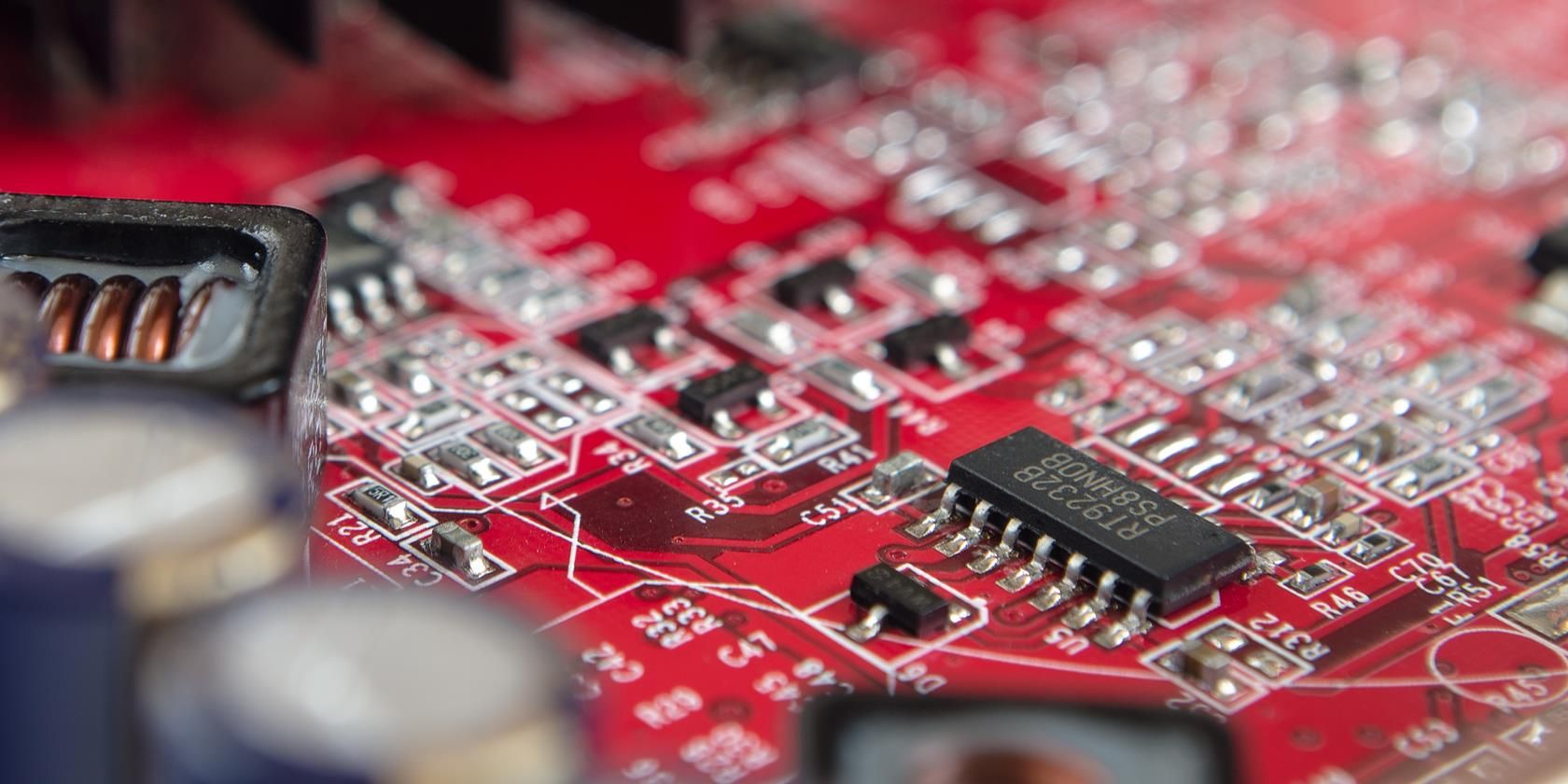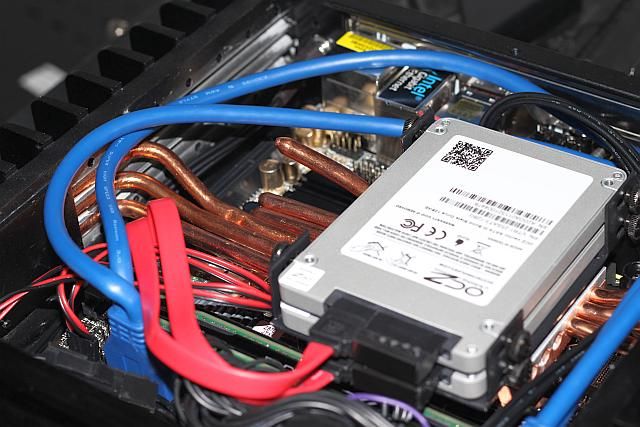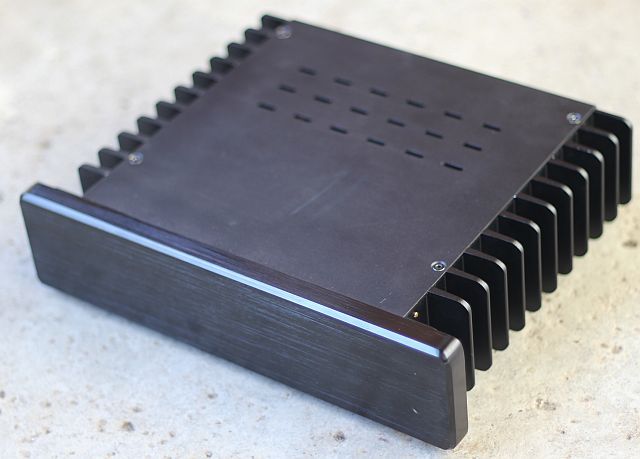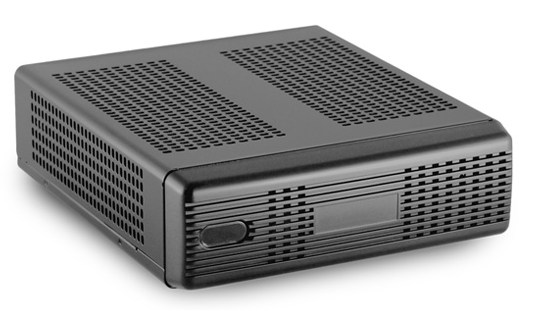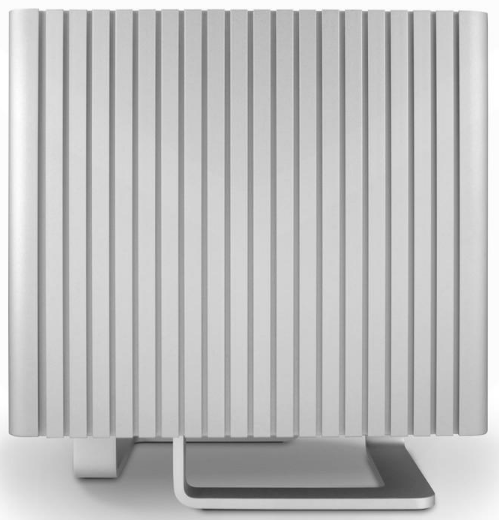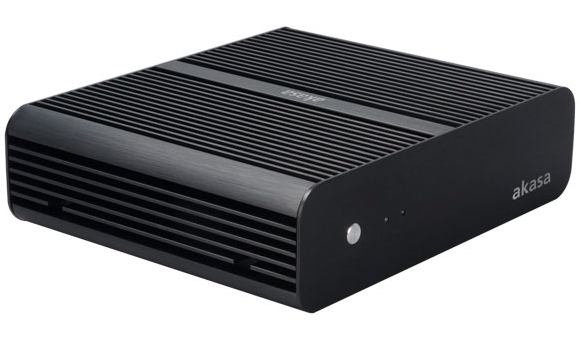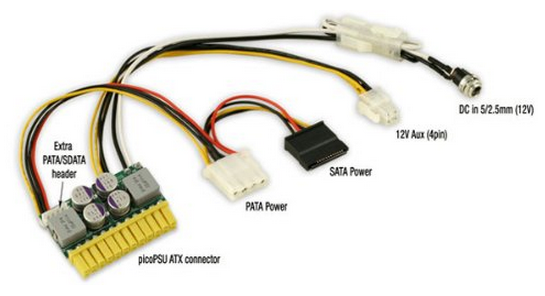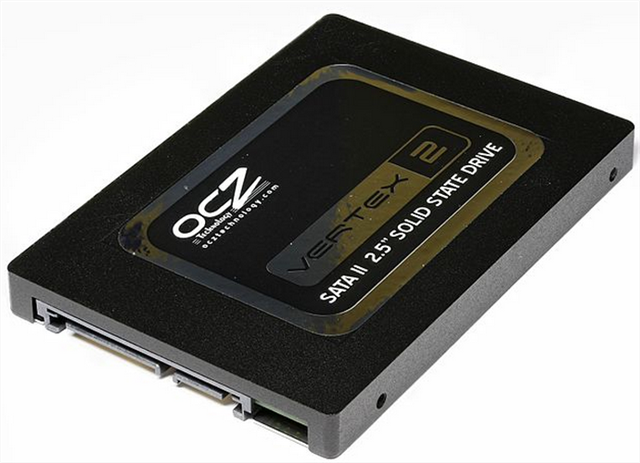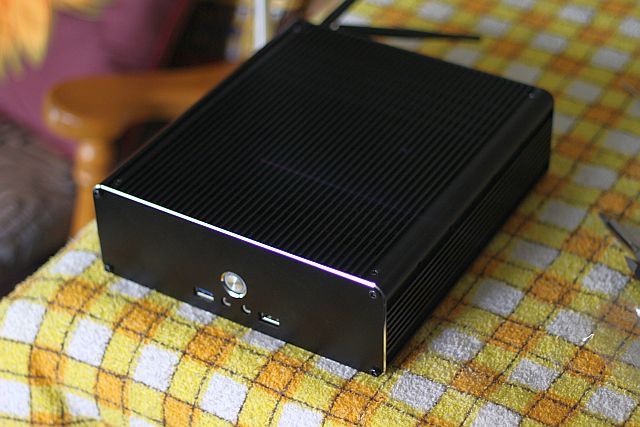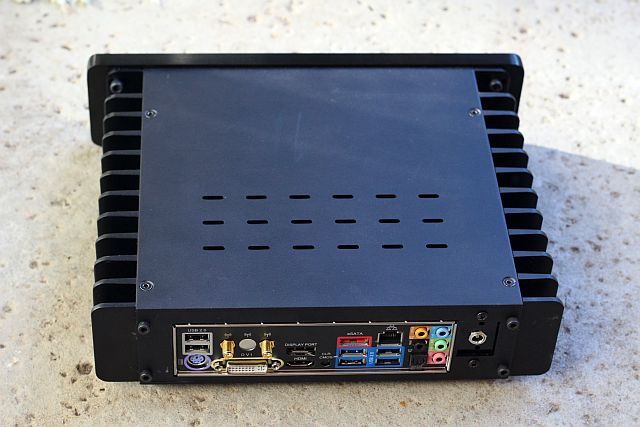Want to build a completely silent, green computer system? It's not hard and can cost as little as $200. Depending on your power costs, low-wattage machines save lots of money and provide solid performance. After throwing together a dozen eco-friendly machines, I've learned a few strategies for keeping your build costs and wattage requirements low.
This article covers component selection for assembling silent and green PCs (but you also can buy silent mini PCs premade, too). In particular, it covers low-power variants of standard computer processors, cases specially designed for fanless, low-power operation and other components that allow for silent, eco-friendly computers.
Sketching Your Build Out
I've written before about rules for building eco-friendly PCs. Saving energy requires using low-power internal components. A fine line between performance and wattage exists. The faster a computer, the more power it consumes. But recent advances in CPU architecture — noticeably present in low power variants of AMD's APU (what's an APU?) line of CPU/GPU hybrids and Intel's T-series processors — allow for computer builds providing adequate graphical performance along with extremely low power requirements. With the right cooling solution, these can become completely silent by dispensing with fans. Fanless PCs save power and improve ease of maintenance.
Before proceeding, take some time to sketch out the relative power requirements of the system. Also pick one of the available platforms, such as AMD or Intel, to base your build on. I prefer using PCPartPicker (we've covered how to use PCPartPicker) to sketch out the basic components and OuterVision's eXtreme Power Supply Calculator to estimate power requirements. Once you've established a general part list, start choosing and buying parts.
Build Considerations
Silent, mini-ITX builds require special attention to four categories: CPU, motherboard, case and power supply. Regarding RAM and hard drives, the kind of RAM isn't really important and you will definitely want an SSD, instead of a traditional HDD.
Processor
Both AMD and Intel offer low power processors. On top of that, Microsoft will soon add ARM processor support for the Windows 10 operating system.
- AMD: AMD's latest line of APUs also include lower voltage variants, designated with a "T". Of their two latest lines of APU, only Richland offers 45 watt processors. Considering that it also offers an integrated GPU, these offer excellent power efficiencies for media center or budget builds.
- Intel: Intel makes several low voltage variants of their mainline CPUs. These are designated by "T", "R" and "S". For example, the Core i7-4765T is a 35-watt version of their mainline Core i7-4770 CPU. These lower wattage processors come with lower maximum clock speeds. For the sake of brevity, I will only list T-series processors and only from their Haswell lineup.
- ARM (Qualcomm and others): All ARM processors are low-power and most are fanless designs. ARM processors can run Linux, but not Windows (though this may change in late 2017). Ideally, you want an ARM processor on a media center build, although they can credibly function as productivity-oriented machines.
Intel low-wattage CPUs:
Intel processors come in five different variations, in order of their performance: Core i7, Core i5, Core i3, Celeron/Pentium, and Atom (Cherry Trail). The first three models use Intel's mainstream Core architecture. The last, Cherry Trail, uses a low-power design. Unfortunately, Intel does everything possible to obfuscate the differences between its Celeron, Pentium, and Atom lines of processors. If you choose to go with a Celeron or Pentium, make sure you're not buying a chip based on the Atom architecture -- unless you want a Cherry Trail processor.
- Core i7-6700T 35-watt $303 MSRP;
- Core i5-6600T 35-watt $213 MSRP;
- Core i5-6500T 35-watt $192 MSRP;
- Core i5-6400T 35-watt $182 MSRP;
- Core i3-6300T 35-watt $138 MSRP;
- Pentium G4500T 35 watt $75 MSRP;
- Braswell: Braswell is a 14-nanometer die-shrink of the Bay Trail architecture. Benchmarks indicate that it's not a significant improvement over Bay Trail.
- Bay Trail series: Bay Trail comes soldered directly to the motherboard, although it's so new only one or two models are on the market. Keep in mind that Intel renamed its Atom series of low wattage CPU into two categories: Pentium and Celeron.
AMD low-wattage APUs:
AMD hasn't released a low power variant of their APU architecture in years. They're still based on the 28-nanometer lithography, meaning they're about three years behind Intel. However, in 2017 AMD plans on releasing its Ryzen line of processor. At present, no projected variation of Ryzen uses less than 65-watts of power, making it unsuitable for passively cooled, compact systems. They did release a G-series processor for embedded systems, but that left system-builders in the dust. Embedded processors come soldered to the mainboard and they cost a fortune.
Motherboard
The motherboard doesn't make a big difference in power consumption, but small form factor cases generally require mini-ITX motherboards. A few passively cooled cases support micro-ATX cases. As of 2016, there are three new motherboard form factors for system-builders: STX, Thin-ITX, and the Next Unit of Computing (NUC). Of the three, STX and Thin mini-ITX offer socketed processors. NUC boards come with a soldered processor and upgradeable RAM.
Passive cooling: Also note that small form factor desktop CPU/APUs can be easily passively cooled up to around 45 watts (watts are generally used as a means of measuring heat production, as well as power consumption). Personally, I prefer using heat pipes, but low wattage (around 10 watts and below) processors typically cool themselves using convection (air flow).
Cases
A number of small form-factor cases exist on the market. However, many require special motherboards. Only one provides versatility and cooling performance.
- HD-Plex HD1.s: I currently use this case on my workstation build (see below). It offers fantastic cooling performance along with aesthetic beauty. However, it comes with a higher than average price tag of $189. HD-Plex actually makes a variety of fanless cases, but to the extent of my knowledge, the HD1.s is the only readily available, passively cooled case for the mini-ITX standard.
- M350: This case works best with a mini-ITX that doesn't require active cooling, such as the ECS KBN-I/2100 or Intel's Cherry Trail lines of mini-ITX motherboard. It can also accommodate a fan for AMD AM1 builds. I think it looks pretty good, too. I've seen it go for as little as $40.
- Streacom DB4: After years of delay, Streacom finally released a passively cooled mini-ITX cube case, the DB4. It can support a discrete graphics card (200mm in length), in addition to five 3.5-inch SATA drives or 12 2.5-inch drives. Unfortunately, it costs over $300 and requires a proprietary power supply from Streacom. However, if you require absolute silence in your work environment, such as a sound engineer, you might want to take a close look at it.
- Akasa Euler: Akasa's Euler design offers passive cooling for Thin mini-ITX motherboards. The entire case doubles as a CPU heat sink and it cools up to 35-watts of power. It sells from some retailers for as little as $100. Akasa continues to improve on the Euler's basis design and multiple variants exist.
A lot of other mini-ITX fanless cases exist, but in my opinion, these four offer some of the best features and design.
Power Supply
I'm using picoPSUs in all the builds listed here. PicoPSUs offer around 96% efficiency when converting from wall current (AC) to DC. They frequently offer between 60 and 150 watts. The average ATX power supply converts at around 70% efficiency. Some other points for consideration:
- Connectors: Make sure that the picoPSU you purchase possesses the necessary number of connectors. Otherwise, you will need to purchase splitters and adapters, which increase build costs. picoPSUs designated with "XT" offer a 4-pin CPU power connector.
- Wattage: Most low-wattage PCs don't require more than 90 watts.
- Cable lengths: Measure your motherboard. You may require an extension cable for certain picoPSUs. The picoPSU plugs directly into the 24-pin ATX power port on the motherboard.
- Case: Some cases come with picoPSUs built directly into them. These already include the correct cable lengths.
Alternatively, thin mini-ITX motherboards (more on them below) include an on-board AC-DC converter.
Other power supplies:
- ATX: Full-sized computers use ATX power supplies.
- FlexATX: This specification arrived in 1999, offering a form factor designed for small form factor cases. It works in a wider variety of cases than either TFX or SFX.
- TFX: These are thinner than regular power supplies. I see them appear more often in pre-built small form factor PCs from vendors such as Dell.
- SFX: Small form factor power supplies offer lower wattages. These are frequently used, along with FlexATX units, in microATX builds.
- Other: For additional details on other kinds of power supplies, check out Tom's Hardware's excellent article on the subject.
RAM and Hard Drives
RAM and hard drives don't really make a big difference in power consumption. However, you do get better performance out of some kinds of RAM when paired with an AMD APU.
DDR3 desktop RAM range from 1.25v to 1.6v. The wattage consumption of a 1.25v compared to a 1.6v stick isn't much. You won't need to pay a lot of attention to that. However, low-profile RAM may help with tiny cases. If you use an AMD APU, you will want to use two sticks (this provides dual-channel mode), which allows for better performance. Some AMD APUs are only single channel only need one-stick of RAM. 1866MHz RAM provides the best bang for your buck, but in general, the higher the RAM's frequency, the better your performance with APUs.
Solid state drives (how do SSDs work?) offer lower wattage requirements compared to traditional disc drives, as well as being faster. Among SSDs, wattage consumption can go as high as 5-watts and as low as 1-watt during operation. Because they come in the 2.5-inch form factor, they also combine well with smaller cases.
Three Sample Low Wattage Systems
For reference, I list three different variants of fanless PC in the (roughly) $250, $500 and $1,000 price range. I actually built both a $200 streaming media center and a $1,000 workstation, both without fans and they work great. I haven't included Raspberry Pi based machines because we already published several articles on that, and they aren't yet capable of general purpose Windows computing.
$200 Intel Linux-Powered Home Theater PC
This particular, ultra-budget build runs between 10 and 25 watts. It uses an Intel Bay Trail processor. It doesn't play anything other than lower-end games at console resolutions (in some cases). It should handle most kinds of 1080p video streams, although it won't play very many games.
Overall, the Antec ISK110 is easily the best mini-ITX case for low-end builds. Its overall cost of less than $70 might seem high, but it comes with both a picoPSU and a power adapter. On top of that, it includes space for two 2.5-inch SATA drives. Be wary, though, that both SSD and RAM prices are set to increase in 2017 as production fails to meet demand.
All prices accurate at the time of writing.
- Case + Power Supply: Antec ISK110-VESA mini-ITX -- $67 via Amazon
- CPU: Included in motherboard (Intel Pentium N3050)
- Motherboard: ASRock N3050B-ITX — $55 via Amazon
- RAM: Patriot 1x4GB — $23 via Amazon
- Hard drive: ADATA SU800 128GB SSD — $45 via Amazon
- Windows tax: Ubuntu 15.04 (certified by ASRock) — $0
- Total: $190
Note: The system below uses a Realan case, not the ISK110.
$556 Passively Cooled Workstation
Intel's thin mini-ITX motherboards offer an even slimmer profile than mini-ITX. While not as efficient as using a picoPSU, it still offers significant power efficiency over a standard motherboard. It also requires a 19v power brick. The case that I used in this design, the Akasa Euler, also doubles as the heat sink, which allows fanless operation. This build can double as both an HTPC and a desktop.
Regarding the case, the Euler's compatibility is officially listed as working only with two motherboards. However, the CPU placement on many thin mini-ITX boards allows a wider range of compatibility. Meaning, it can fit most Intel mini-ITX motherboards. It's also VESA mountable, so you can attach it to the back of a monitor or TV with an adapter.
All prices accurate at the time of writing.
- Power Supply: 90-watt universal adapter $10 via Amazon
- Case: Akasa Euler — $100 via Sidewinder Computers
- CPU: Intel Core i3-6300T — $158 via Amazon
- Motherboard: ASUS H110T/CSM Thin mini-ITX — $80 via Amazon
- RAM: G.SKILL Ripjaws DDR4 2 x 4GB SO-DIMM RAM — $43 via Newegg
- Hard drive: ADATA SU800 128GB SSD — $45 via Amazon
- Windows tax: Windows 10 Home — $120 via Microsoft
- Total: $556
$1,000 Passively Cooled Workstation/HTPC
The HD1.s case works with a wide variety of motherboards (both ITX and Thin ITX) and processors. However, it also runs around $180. With a built-in power supply, it costs around $230. The build I made uses around 15-25 watts while in normal operation and uses a full-sized mini-ITX board (it's also compatible with thin mini-ITX boards). The HD1.s case also works with a wide variety of processors, including almost all CPUs listed in this article. Although heavy and requiring a great deal of labor to assemble, it also cools at least up to 45-watt processors and offers VESA compatibility.
All prices accurate at the time of writing.
- Power Supply: 80-watt AC-DC adapter — $25 (add-on option to case)
- Case: HD-Plex HD1.s — $214 via HD-Plex
- CPU: Intel Core i7-6700T — $360 via Amazon
- Motherboard: ASRock H110M-ITX/ac mini-ITX — $90 via Amazon
- RAM: Crucial DDR4 2 x 8GB DIMM RAM — $98 via Jet ($85 with 'WELCOME15' coupon)Hard drive: Crucial MX300 525GB SSD — $129 via Jet
- Windows tax: Windows 10 Home — $120 via Microsoft
- Cost: $1011
Conclusion
Building an ultra-quiet, fanless, low-power mini-PC with solid performance doesn't require lots of money or effort. I don't recommend that everyone run out and build fanless systems, but for enthusiasts, it's now possible with a great variety of components.
Not only do these cases take up less space, but they also provide lower weight, VESA-mounting, and lower power requirements. Dispensing with fans saves around 2-5 watts per fan, depending on how hard it's working to cool the system down. Removing the three fans required of the ATX specification drops around 6-15 watts from the build and improves your computer's ease of maintenance.
Does anyone else love tiny PCs offering silent, fanless and green computing? Let us know in the comments.
Image Credit: Abros'kin Sergey via Shutterstock.com
This article was updated 2nd January 2017

